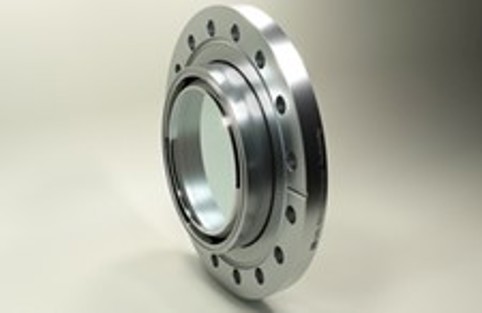Optical viewports are specially-designed windows that provide optical access to the kind of high-vacuum systems used in atomic research. They enable scientists to directly observe processes and also perform actions such as applying lasers to manipulate atoms.
The new viewport technology – which is claimed to reduce optical distortion by up to 75 per cent – was developed by the UKAEA’s Special Techniques Group, a division originally set up to address some of the unique manufacturing challenges presented by the development of fusion energy.
The group’s diffusion bonding process allows the precision assembly and high integrity joining of optical materials like fused silica, quartz, sapphire, and diamond to a variety of metals such as stainless steel and titanium.
Funded through the UK Government Office for Technology Transfer (GOTT) – Knowledge Asset Grant Fund – the new technology builds on the findings of Project Solace, an initiative focused on gathering expert feedback from optical viewport users.
This feedback revealed that optical flatness of viewports was most important to reduce distortion of measurements coming from trapped atoms and that users also valued the group’s custom engineering capabilities which enables customisation of viewport shapes to fit microscopes, magnets and other instrumentation.

Following the development of new modelling tools, the Group engaged Frazer Nash Consultancy to evaluate multiple viewport design options and identified opportunities to reduce optical distortion by up to 75 percent compared to baseline design.
Tim Bestwick, Deputy CEO for the UKAEA, said: “The unique technical challenges posed by fusion research has driven UKAEA’s Special Techniques Group to develop optical viewports that operate under extreme conditions with minimal optical distortion, and we have been able to prove these in fusion experiments. The team now plans to design and produce ultra-low distortion optical viewport designs for the next generation of quantum computers and sensors.”
The new designs will be available for different sectors and global markets, including aerospace, beam-line science and high-power laser applications, to provide solutions to manufacturing challenges.











McMurtry Spéirling defies gravity using fan downforce
What a fun demonstration. I wonder if they were brave enough to be in the car when it was first turned over. Racing fan cars would be an interesting...